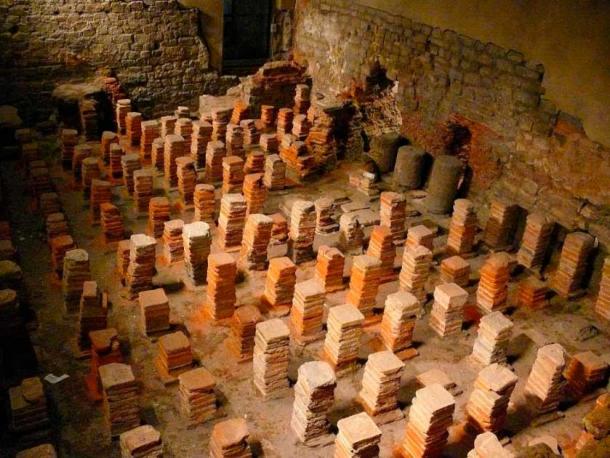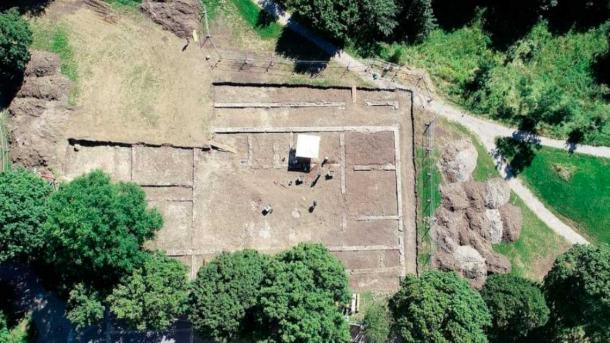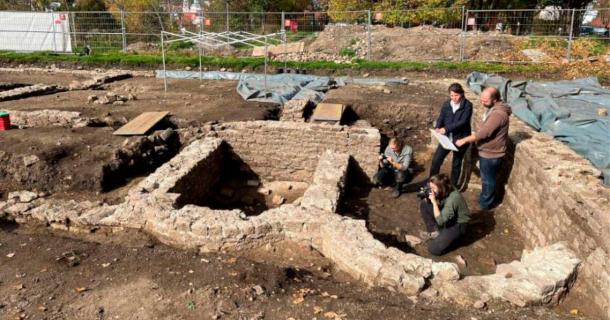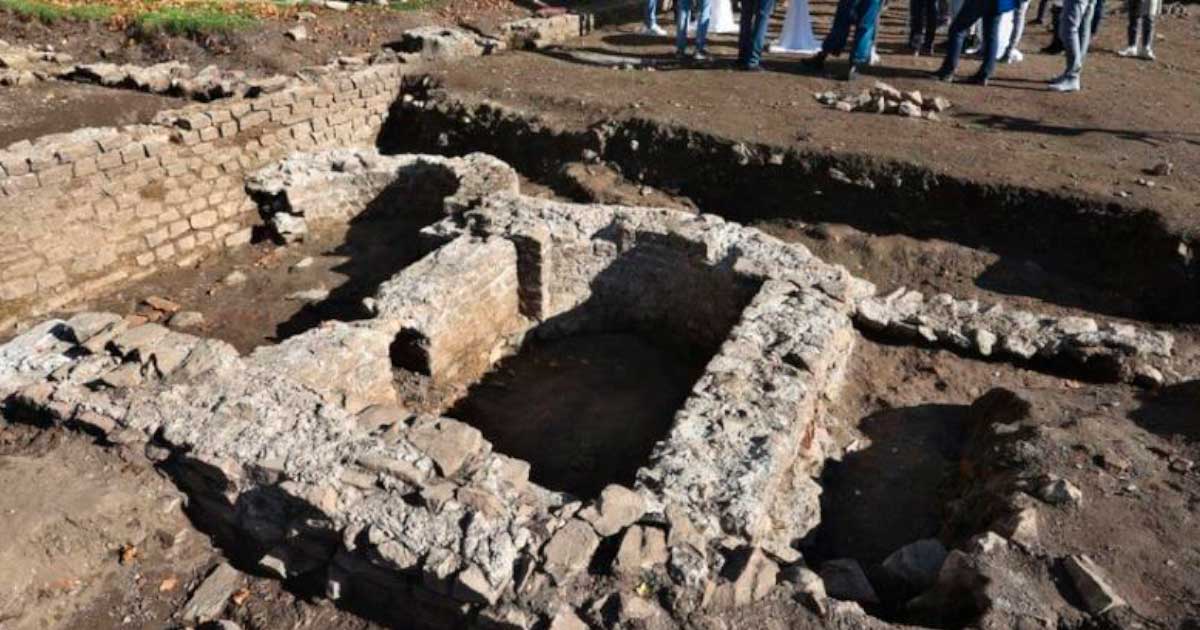2,000-Year-Old Roman Villa Found in Germany had Luxurious Underfloor Heating
In 15 BC the Roman Emperor Nero Claudius Drusus Germanicus, and his brother Tiberius attacked, subdued, and destroyed a Celtic settlement and founded the city of Cambodunum. Today, the foundations of the Roman city lie beneath the town of Kempten, in Bavaria, but in the Roman period this was the province of Raetia’s chief administrative center, and it remained as the kingpin of regional power until 120 AD.
Cambodunum represents the oldest city on record in Germany and reflecting true Roman grandeur, its elite residents socialized at a forum, in public temples, and baths. Now, a team of researchers has discovered and excavated a luxury villa in which they discovered frescoed walls, a thermal bath, and Roman “underfloor heating.”

A hypocaust (Latin hypocaustum) in the Roman Baths, Bath, UK. A hypocaust is an ancient Roman system of central heating. The word literally means "heat from below", from the Greek hypo meaning below or underneath, and kaiein, to burn or light a fire. (Ad Meskens/ CC BY-SA 3.0)
Romans Residing at a La Tène Cultural Center
Arkeonews reports that the new discovery was made in the Archäologischer Park Cambodunum (APC), at Kempten, in Bavaria, Germany. The hilltops and thick forests of this region are encrusted with massive crumbling stone structures from the Celtic La Tène period (450 BC - 43 AD,) which came to an end when the Roman army invaded the Alps.
- Who Said Ancient People Had it Tough? Luxury Homes and Underfloor Heating Were a Part of Life in the Roman Province of Britannia
- Ancient Bone Hidden in a Stone Leads to a Roman Villa of Royal Proportions
In 50 BC, the Greek geographer Strabo mentioned a town of the Celtic Estiones called “Kambodunon,” however, no archaeological evidence has thus far been found at Kempten to suggest this Celtic settlement actually existed. “Cambodunum” was officially founded by Emperor Augustus in the 1st century AD because of the location’s strategic benefits. Not only did it offer access to the Alpine passes connecting the city with Bregenz, the capital of Vorarlberg in modern day Austria, but via Lake Constance and the Rhine, Cambodunum was connected with Gaul.

The villa was large, at least 800 square meters over two stories, and had screed floors, frescoed walls, and private hot baths, along with hypocaust heating under the floor. (Maria Kohle / Kulturamt Kempten)
The newly identified Roman villa is one of the oldest ever discovered in Germany. The researchers found that Roman engineers had installed an underfloor heating system in the house. Known as a “hypocaust” these heat manufacturing and distribution devices were forerunners of all present-day central heating systems.

The Roman villa had a luxurious underfloor heating system. (Michael Frick)
Elite Romans Installed State of the Art Thermal Technologies
Hypocausts produced warm water and hot air that circulated through pipes heating the flooring. The warm air was also pumped through a series of pipes built into the walls, warming upper floors as well. By the 4th century, hypocausts were used extensively in both public baths and private homes around the Mediterranean and beyond.
- The Lost Knowledge of the Ancients: Were Humans the First? Part 3: Science in Antiquity
- Kings Weston Roman Villa, Where a Murder Lay Hidden for 1500 Years
Similar to this discovery, in 2016 Ancient Origins covered the story of a team of archaeologists excavating in Leicester city, England, who uncovered “a fantastic Roman mosaic in a home with underfloor heating.” So popular was this contraption that by 1400 AD sophisticated hypocausts were being installed in Turkish Baths across the Ottoman Empire.
Researching the ancient origins of underfloor heating one must go back to Neolithic North-Korea, where the earliest underfloor heating system was discovered. Dating to 5,000 BC, a series of clay floors were discovered that had been “heated, or baked repeatedly.” According to an article about the history of floor heating on Easyflow.org, by 3,000 BC Koreans had developed an oven and fire hearth system and by 900 BC a double hearth was being used: one for cooking and the other powering a floor heating system.
Top Image: This 2,000-year-old villa had luxurious ancient Roman underfloor heating. Source: Karl-Josef Hildenbrand/dpa
By Ashley Cowie




















Comments
You asked a similar question a couple weeks ago, Kathy, which I answered. You don’t remember already?
Nobody gets paid to tell the truth.
Peter Wagner, interested to know if you're an archeologist?
There’s absolutely NO WAY the Romans built this. Who did and when? Again, almost certainly pre-Ice Age. Stone complexes, particularly laboriously constructed ones, would never wind up buried like that in only 2,000 years. Would take something very BIG, and/or long, long ago, to do it.
Nobody gets paid to tell the truth.